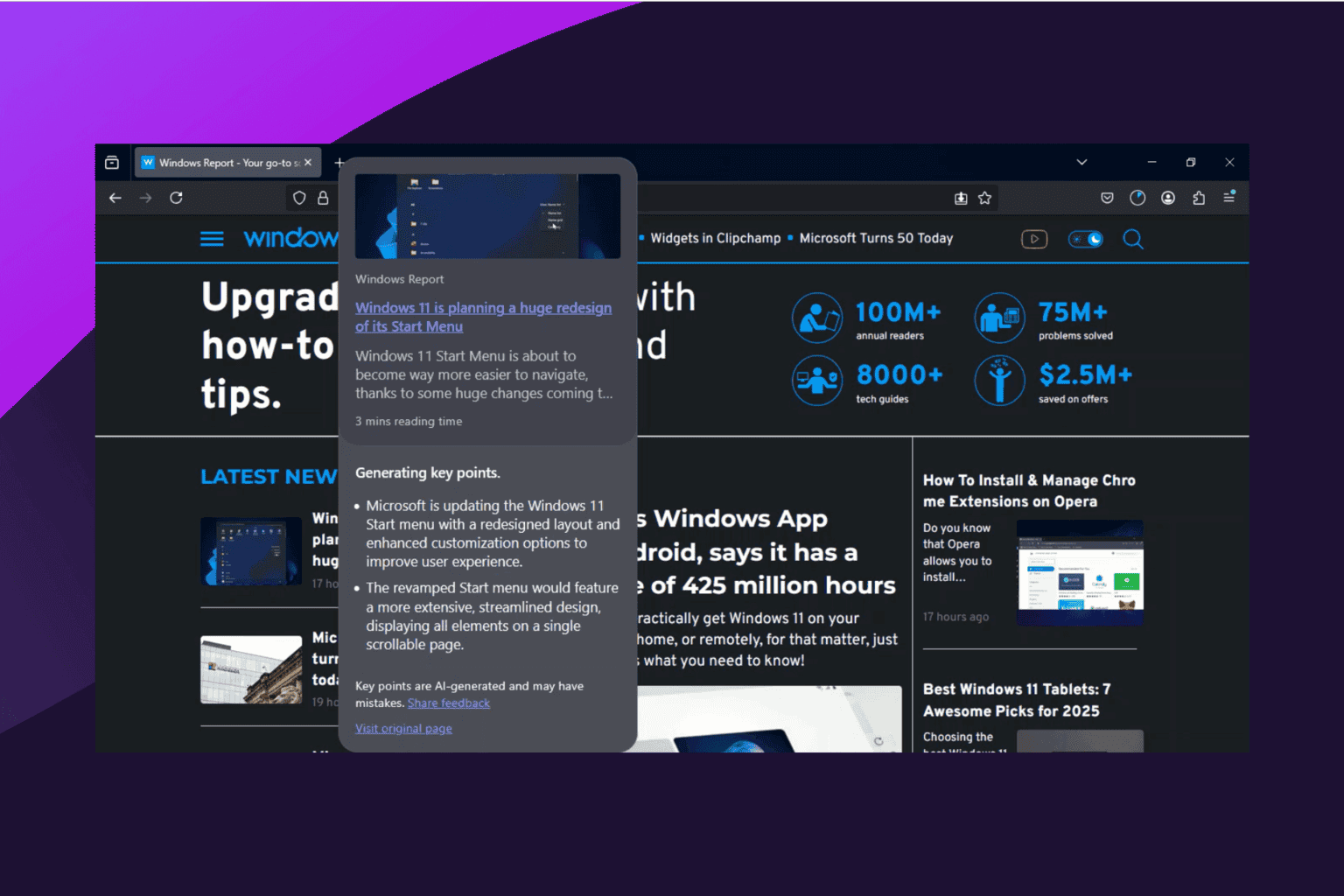SciSpace Copilot: What is it & How to Use
Turning hard-to-read papers into digestible texts
5 min. read
Updated on
Read our disclosure page to find out how can you help Windows Report sustain the editorial team. Read more
Key notes
- To use SciSpace Copilot, you need to create an account then sign in to start using the tool.
- You can explain complex terms, paraphrase text, and check for AI detection.
- Stay tuned as we unpack how to set it up and other noteworthy features you may be missing out on.

If you’ve ever encountered a topic you didn’t understand, SciSpace Copilot can help you break down its complexities with simple explanations.
So, if you’re looking to have a more fun and meaningful science experience, take a look at SciSpace Copilot and how you can use this resource to your advantage.
What is SciSpace copilot?
SciSpace is not your ordinary AI research assistant. Hundreds of AI software and AI websites are available, but SciSpace goes above and beyond to unpack and explain complex research papers in less technical jargon.
The goal is to enable people without a background in science or mathematics to read scientific articles and understand their main concepts easily. You can scan articles using Google Scholar and use SciSpace to break it down.
How do you use SciSpace Copilot?
1. Setting up SciSpace Copilot
1.0 Creating an Account with SciSpace Copilot
- Launch a browser of your choice and navigate to the SciSpace Copilot website.
- Hit the Sign up button at the top-right corner of the page.
- Fill in the required credentials: email address and password, then hit Sign up.
- Enter your Background and Field of study, then click Done.
- Go to your email and click the verification link to confirm your account, and you’ll have logged in.
1.1 Navigating the User Interface
- Search bar – This is centered where you can upload papers and get insights directly either from SciSpace’s repository or from your own Library that you may have created.
- Chrome extension – On your homepage, you will see a Chrome extension. Click on it, and you’ll be directed to the Chrome webstore. Add the extension, and now, you won’t have to open SciSpace whenever you want to research a paper.
- SciSpace menu – The menu will pop up on the left-hand pane when you hover your mouse. Here, you will discover your Library and other tools to make your work easier.
- Popular papers – As you scroll down, you’ll get a collection of papers based on your field of expertise or the various areas you selected when signing up.
- SciSpace help – You’ll get the SciSpace chatbot at the bottom left corner. If you have any issues with the tool, you can get answers by chatting with the bot.
1.2 Customizing Settings and Preferences
- Language preferences – SciSpace is available in multiple languages. If you have a research paper and want it explained in a different language, you can tweak your settings. Simply click on your Library and expand Copilot at the bottom right corner. Now select your selected language from the drop-down menu. Once you highlight the text you want explained, Copilot will explain it in your chosen language.
- Bookmark articles – If you’d like to save an article for later use, you can bookmark it. Simply open the research paper and, just above the title, click on Save. You’ll be prompted to create a collection. Here, you can give your collection a new name and save like papers under that new collection. You can also create as many collections as you like, and they will be saved in your Library.
- Share articles – If you’d like to share the research paper with other people, click on the Share icon, and in the drop-down menu, select the mode of sharing you prefer.
2. Using SciSpace Copilot Features
- Finding technical terms and explanations – If you come across an unfamiliar term and don’t have time to go to the dictionary, simply highlight that word and select Explain. SciSpace will define the technical term.
- Generating follow-up questions – If after the technical term has been explained, but you still don’t understand, you can click on Follow up. This allows you to get more insight and helps you better understand the context.
- Accessing native language explanations – This can be done just as mentioned above in the language preferences section.
- Giving feedback – You can also leave feedback on SciSpace answers. If you feel the answers have been sufficient or need more depth, you can leave remarks for future improvement.
- Citation generator – If you don’t have time or don’t know various citation formats, this tool can help you generate them. You can paste a URL or add text manually.
- Utilizing AI-powered tools and Chrome Extensions – The tool has an AI detector, and Copilot read with AI. The former helps you create AI-free content by analyzing and scanning the content. Copilot read with AI helps you scan hundreds of pages and come up with summaries or a general overview of the paper without having to scan through pages.
- Analyzing scientific papers and articles – SciSpace can analyze a paper in seconds by giving you a concise explanation. With the preset questions, you can easily go through the important parts and move on swiftly.
- Paraphrase – If you’d like to create content, the tool can help you paraphrase text and humanize it so that it doesn’t sound robotic. However, you’re better off using open-source AI content generators as they are more reliable.
Is it safe to use SciSpace?
It is completely safe to use SciSpace and even encouraged. The tool’s main purpose is to simplify the technical terms used in scientific literature so that you can get simpler explanations.
Furthermore, additional tools, such as AI detector help you avoid academic dishonesty by producing AI-free content. It becomes problematic when you use the paraphrasing tool and fail to credit the original authors.
Such anomalies can easily be detected using essay grading software as they have built-in features to detect plagiarism. You’d rather use a powerful AI tool such as Caktus AI to help you refine your writing skills and produce quality content.
And that’s about it on how to use SciSpace. We’d love to get your opinion on this tool and your experience if you have used it. Do you think it’s a necessity or just another tool to perpertuate laziness? Let us know your thoughts in the comment section below.
















User forum
1 messages